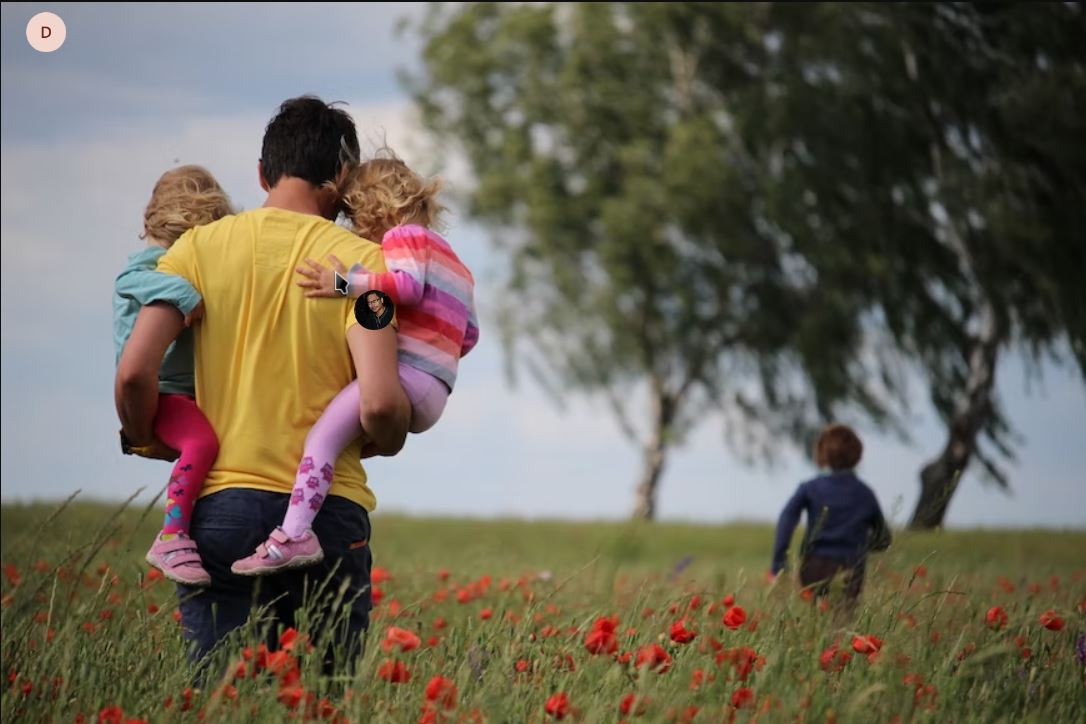By | Yuzida Md Yazid

Caption: Lil Sarah’s first swimming session (location tagged, together with a photo of Sarah, the cute little girl). Click Post!
Sharing and documenting every bit of our lives has become a social norm, but how much is too much? This question becomes essential when it concerns parents and their posting habits about their children online. This habit is called ‘sharenting’ whereby parents obsessively share details about their children's lives on social media. Parents do not only share the photos of their children on the social media platform, but they also interact with other parents to discuss about parenting. These parents go to the extent of even documenting their child’s first day of life after being born on social media. Now, even toddlers and infants have online presence. Unlike adults, children have limited ability to consent or object to their information being shared on social media. Some parents find it difficult to maintain control due to peer pressure from well-intentioned friends and family who share their children’s pictures on their respective social media feeds.
The term sharenting, as mentioned above, is a term derived from the words 'share' and 'parenting’. It was defined by Stacey Steinberg (2017) in her paper 'Sharenting: Children's Privacy in the Age of Social Media' to refer to the manner in which many parents share details about their children's lives online. The phenomenon of sharing too often or too much of their children's lives on social media through the posting of text, images, photographs, and videos that convey personal information about their children is referred to as 'over-sharenting.' The act of ‘over-sharenting’ by the parents, will unwittingly create a child’s digital representation. Sharenting usually starts with sharing pictures of their children online, then followed by videos and status updates. Some parents share with good intentions, for example, in a support group, especially in children health-related groups. Some parents share their children’s milestones to document memories. With sharenting, long-distance families who could not meet often always stay in touch. Despite these reasons, parents must be wise to know the limit on how much to share. However, how much is too much?

Is Sharenting Bad?
Since early last year, the world was struck by an ongoing global Covid-19 pandemic. As a result of the outbreak, many of us are now living in a new norm, being largely confined to our homes for a long period of time. Many have started to work from home. During this new norm, some parents turned to their children to produce social media content by pulling numerous pranks on them and documenting in video blogs (vlogs) that went viral online. Parents should always be aware that posting these embarrassing photographs and videos of their children might leave a negative emotional impact on them. The negative impact may not be immediate as their child may be too young to understand the effects and consequences. Parents must bear in mind that the pictures and videos that they find adorable, might not sit well with strangers who could post adverse comments about them.
Sharenting is also regarded to be an infringement on the child's right to privacy, which has been a rising concern. The protection of children’s privacy is a subject that requires extra attention in this digital era, as excessive personal information on the Internet or online endangers a child’s privacy. Some parents tend to record every single moment of their child and later share the photos or videos on social media. While some parents are aware that their children hate sharenting, they still continue the practice, citing their own right to share anything about their own children on social media.
Digital Kidnapping
The act of excessive sharing or overexposing by parents about their children’s lives may pose several risks. These risks include interfering with a child’s sense of privacy, as well as their safety. Digital kidnapping is one of the ways that could endanger them. Digital kidnapping occurs when a stranger steals a child's photo from the Internet and impersonates as the child or their parents by uploading it as their own. They will then share these photographs on their respective social media feed, rejoicing in the ‘likes’ and ‘comments’ that they receive. The most common reason for digital kidnapping is to expose private or sensitive information that will leave a detrimental mark on the child's life, such as making it difficult for them to get into college or exposing them to bullying. In rare circumstances, a kidnapper may impersonate as a parent and convince the followers that they are the child's parents. These impostors can then obtain information regarding the children by posing as a peer and utilize that information which may eventually lead to physical kidnapping.
Emma Nottingham in ‘Dad! Cut that Part Out’ used the term ‘generation tagged’ to refer to children who have been exposed on social media by their parents (Nottingham, 2019). As a result, many children already have a plethora of photos, videos, and updates about their everyday life on social media before they can even walk. Most parents will post hundreds of their child's photos before the kid turns five. These photos are usually accompanied by hashtags and location tags which can lead to the child’s profile being tracked. This can be detrimental if the information falls into the wrong hands from pedophiles to kidnappers.
Sharenting - A Support System and a Coping Mechanism
Sharenting is a convenient way to keep in touch and for faraway family and friends
to convey well-wishes and share information about the well-being of family members. With sharenting, parents can create a support network with other parents, to discuss parenting experiences, and how to solve common problems. They can even get some tips through sharenting that might help them improve their parenting skills. Sharenting tips can range from dietary tips, how to discipline kids, behavioral problems, and so on. Parents nowadays are open in discussing their children’s health and parenting issues on social media. This shows that sharenting could play an important role by helping parents access a support network.
Smart Sharenting
Although sharenting has become common nowadays, it does not mean that parents should neglect any safety tips. Below, are some safe practices that every parent should follow before posting any content about their children online.
- Before posting on any social media platforms, make sure you understand and are comfortable with their terms of service.
- Set all your social media accounts to private, so that only followers you approve can see what you share. If your account is public, set it to ‘Restricted’ or ‘Closed Group’ when sharing a personal post or photo.
- Set up google alerts for your kid’s name, and keep an eye on their online presence
- Avoid sharing content with location information.
- Avoid posts that show your kids in any state of undress or partially undressed.
- Resist the urge to upload or share personal photographs that are too personal such as a child on a potty.
- Avoid including hashtags such as #pottytraining #bathtime #nakedkids
- Give older kids rights over images, quotes, and other information related to them.
- Consider the potential impact a post could have on your kid’s wellbeing— either present or the future.
- Think about whether the material shared can be misused, not only in the present day but also in the future.
- Always remember that once the material or information is shared, you will not have control over how it will spread.
- Create family sharing guidelines with older children and stick to agreed-upon rules when posting.
- Reduce the frequency of sharenting. Updates need not be daily.
- Practice ethical sharenting - a collaborative process that involves parents and children making decisions together in weighing all factors, motives, and any specific needs.
Despite the risks of sharenting, it is hard to object to its use as we are living in a hyper- connected world. Moreover, sharenting is a great way to share the latest photos and milestones of the kids with our loved ones, especially during times when lockdown prevents traveling and visiting. It can also help update our children’s development and progress to other family members. However, parents must always remain alert and refrain from over-sharenting which could jeopardize their children’s safety. Parents who are aware of privacy concerns should prevent over-sharing information about their children on social media. As gatekeepers of their children’s personal information, parents must decide and control what and how much information is safely shared and disclosed to the public.
Remember!
Any time you post images of your child, you just don’t know who is seeing them and what they are going to do with it.





